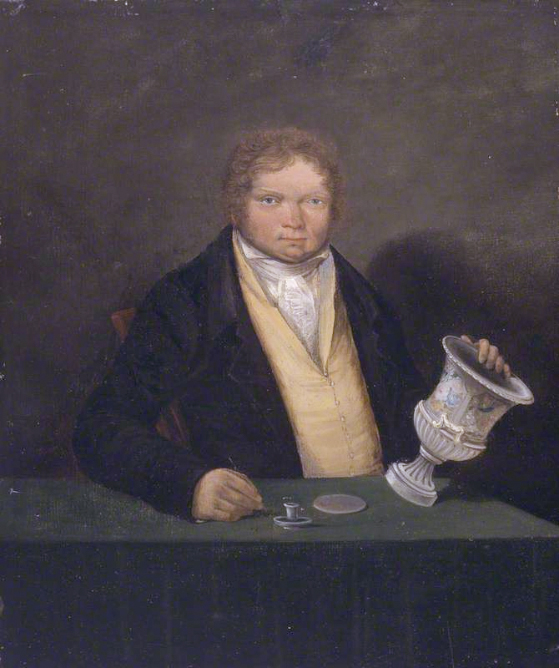Thomas Pardoe 1770-1823

Thomas Pardoe (1770-1823) was a major artist in the porcelain trade of the late 18th/early 19th century period. Born in Derby in 1770, he was apprenticed to the Derby porcelain works around 1785 where he undoubtedly learnt his skills as a china painter. After probably some time at Worcester, he was at the Cambrian Pottery in Swansea, Wales, by 1795. Here he became the chief decorator of the fine white earthenware they produced. In 1809 he established an independent decorating studio in Bristol, which continued for the next decade. In 1820, he was employed at Nantgarw, Wales, at the behest of William Weston Young. Young had been financing the Nantgarw factory, and when it failed, Pardoe was able to cut the loss to some degree by decorating the stockpile of white porcelain ready for sale. He continued at this task until his death in 1823.
Pardoe’s style shows his origins, with a classic ‘English Flower’ style commonly seen at Derby. While at Derby, he would have crossed paths, perhaps worked under William Billingsley – regarded as the supreme ‘English Flower Painter’ of the period. They had been born in the same parish in Derby, with Billingsley being 12 years older. A sketch book in the Victoria & Albert Museum, compiled by a descendent of Pardoe, includes examples of Billingsley’s work dating to the time Pardoe was still in Derby, clear evidence of the master’s influence. However, Pardoe’s flowers definitely have their own style, with the best way to describe them being ‘fluid’. His technique looks like the paint is still drying – often lacking clarity & detail, and missing the subtle graduation of tone seen in Billingsley’s work.
He was very versatile, with every type of decoration being evident, from Chinoiserie to landscapes, sheashells to birds, and of course the ever popular flower groups.
His botanical studies are different, being careful renderings of specimens often sourced in the Curtis publications. They are detailed and much more precise, although once again, detail and tone seen in the watercolour originals can be lacking. The main method of identifying these botanical subjects as being by Pardoe is by his distinct handwriting – the practice beng to copy the common name from the Curtis print to the back of the plate, usually in a red script.
